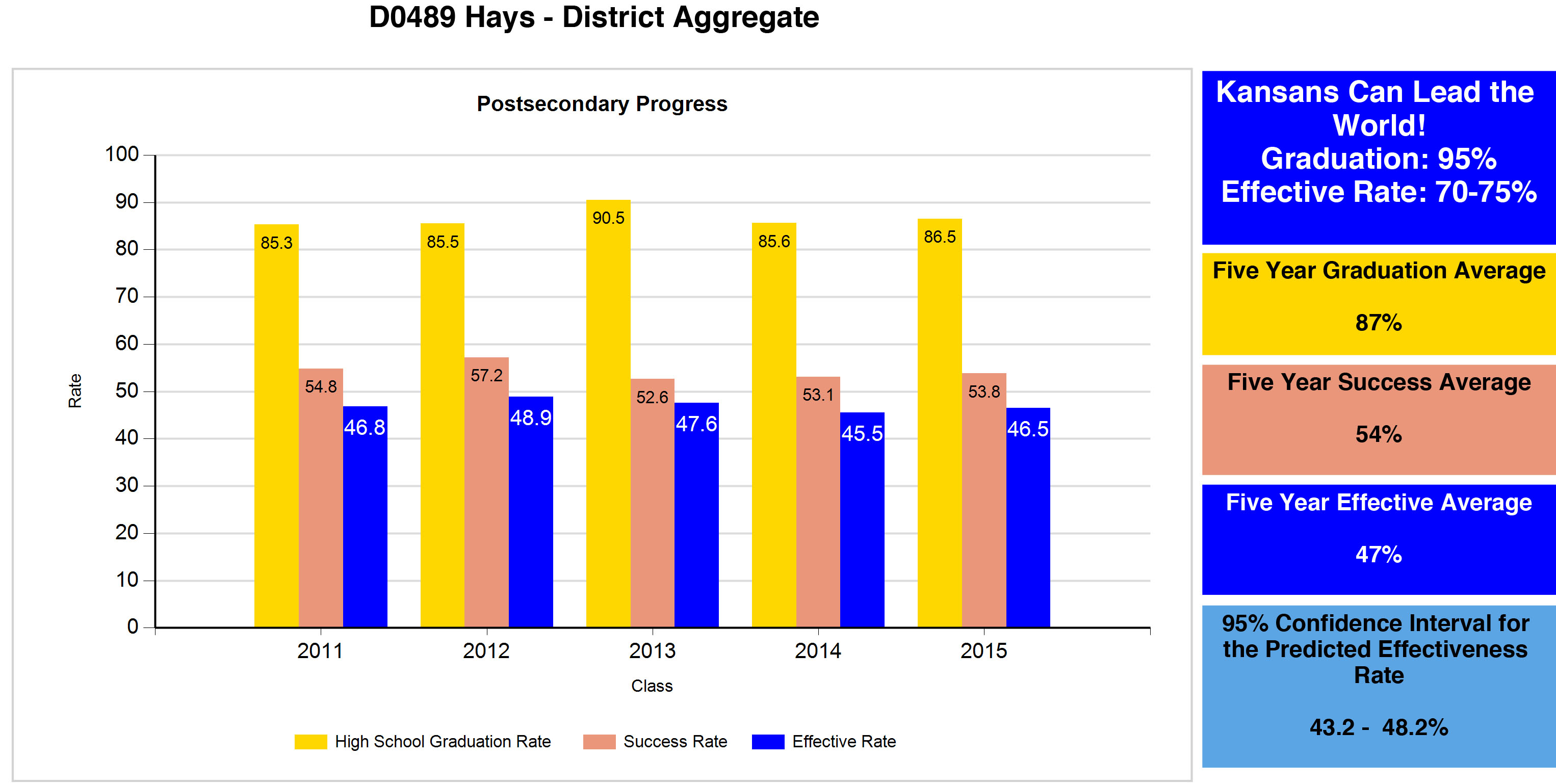By CRISTINA JANNEY
Hays Post
The Hays USD 489 school board received its first taste of data Monday night that will be used in district accreditation starting this year.
Among the data is postsecondary progress, graduation rates, attendance, ACT scores, teacher licensure, dropout rates, demographics, standardized test scores, comparative performance and fiscal systems, and special education reports.
Assistant Superintendent Shanna Dinkel discussed the district’s postsecondary success numbers.
“We are looking more globally than a single test,” she said.
By the year 2020, an estimated 70 to 75 percent of Kansas jobs will require post-secondary degrees or certificates.
The district’s five-year graduation rate is 87 percent. The state average is 85 percent. The state goal is 95 percent.
The district’s five-year post-secondary success rate is 54 percent. That includes students who have earned degrees or certificates or are in school.
The state then figures an effectiveness rate. That takes into account the district’s number of students with risk factors such as disabilities.
The range the state would expect the district to be in is 43.2 to 48.2 percent. The district’s effective rate is 47 percent.
Superintendent John Thissen said a five-year predicted effectiveness rate of 47 percent is good. Those districts whose effective rates are at or below the state’s predicted effectiveness rate will have a greater the challenge to meet the new state standards.
Dinkel also discussed the drop out rate, which was 1.6 percent in 2015 and 1.7 percent for 2016 for the district. The district’s rates match the state’s rates for the same years.
The rate is recorded annually and accounts for all students in seventh through 12th grades who leave the district without a transferring school.
You can search the entire report as well as state figures at http://ksreportcard.ksde.org/.
In other business, the board:
• Heard a financial report from Tracy Kaiser, executive director of finance.
Kaiser said the district has taken in about $35,000 more in miscellaneous income that it budgeted. This included Midwest energy capital credits and additional funds in tech fees.
The district has spent about 10 percent of its budget at a time when it budgeted to have spent 21 percent.
• Approved the purchase of three suburbans at a total cost of $116,856 and the purchase of two route buses at a total cost of $181,662. The purchases are part of the district’s five-year transportation plan. The bids were under the $304,000 budgeted for the purchases.
• Conducted an executive session on negotiation, but took no action.
• Heard a report on materials/ workbook fees. Thissen said the district would look closer at the possibility of lowering fees when it has a better idea of what funding will come from the state for the 2018-19 school year.


